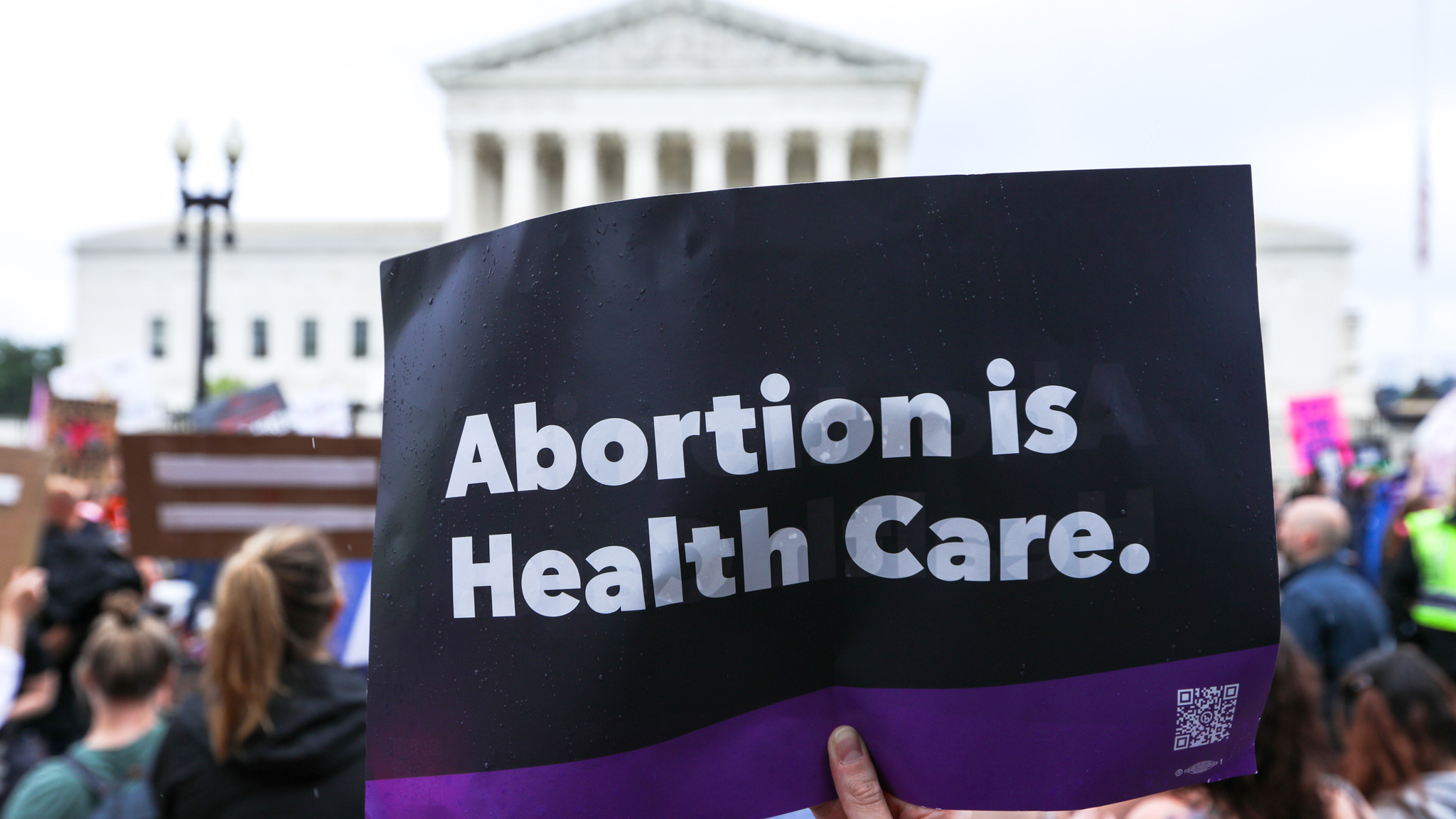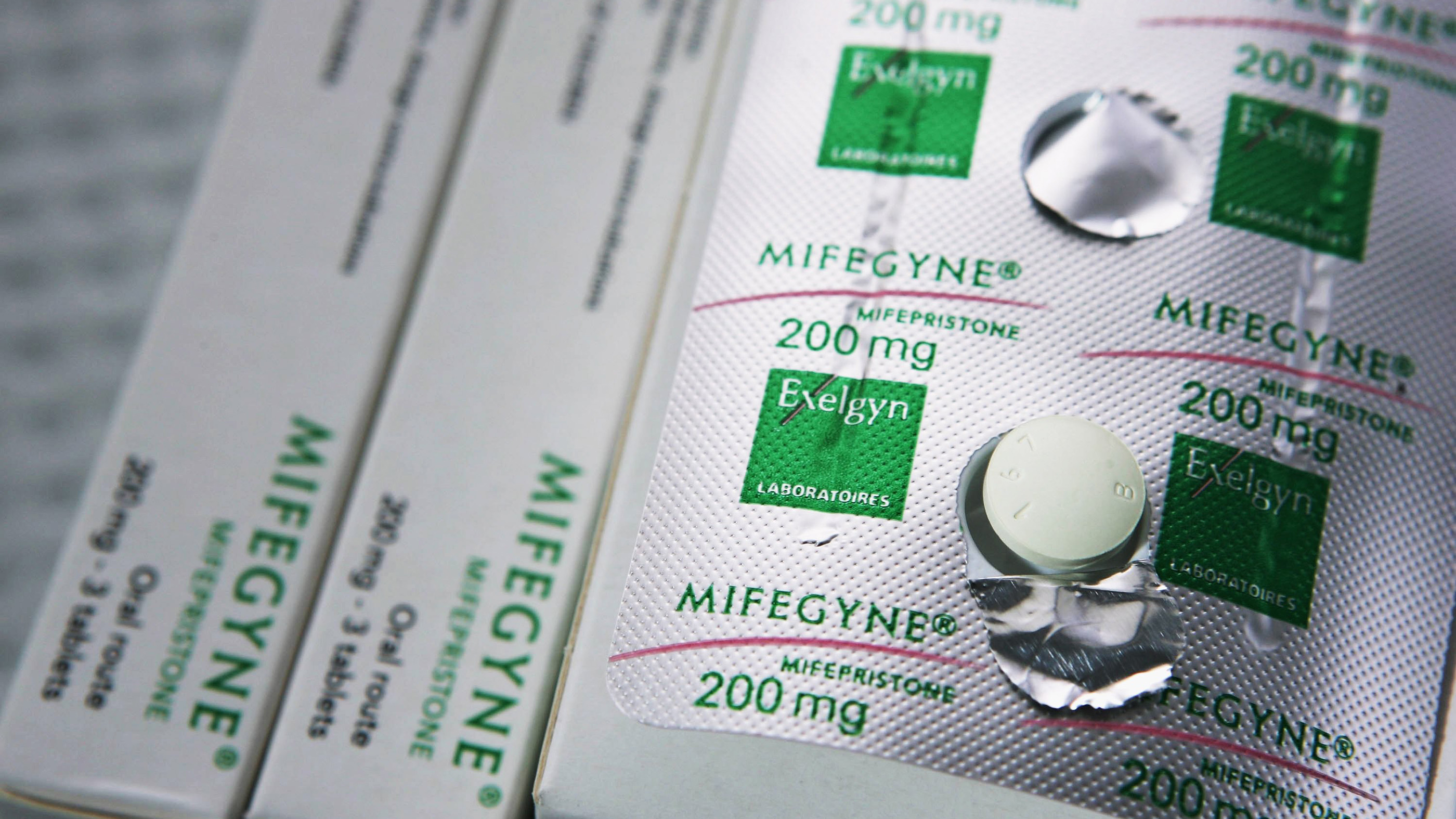What is an abortion?
Here's a look at the science behind the early termination of a pregnancy.

An abortion is the early termination of a pregnancy, which can happen spontaneously, as in the case of a miscarriage, or can happen when the pregnancy is ended by medical or surgical means. In these latter cases, the abortion method depends on the stage of pregnancy, among other factors.
On June 24, 2022, the Supreme Court overturned Roe v. Wade and thus eliminated the constitutional right to abortion in the US.
How are abortions induced?
There are a few different ways an abortion can be induced, depending on how far along the pregnancy is and whether the pregnancy is inside or outside the uterus, said Dr. Deborah Powell, a professor of laboratory medicine and pathology at the University of Minnesota and member of the National Academies' Committee on Reproductive Health Services: Assessing the Safety and Quality of Abortion Care in the U.S.
The majority of abortions occur within the first trimester, meaning the first 12 weeks of pregnancy, or very soon after, Powell said.
The methods are as follows, according to a 2018 report on the safety of abortion care in the United States, authored by the National Academies' Committee on Reproductive Health Services:
- Medication abortion, or "medical" abortion: This method is FDA approved for pregnancies up to 10 weeks' gestation and involves two medications that are taken 24 to 48 hours apart. The first pill is mifepristone, which blocks the production of progesterone, an important hormone for maintaining pregnancy. The second pill is misoprostol, which induces uterine contractions that empty the uterus. (Note that, in some cases, misoprostol may be prescribed on its own, according to the World Health Organization, WHO.
- Aspiration abortion (also referred to as surgical abortion, suction curettage, or dilation and curettage (D&C)): Aspiration is the most common abortion method used in the U.S., accounting for about 68% of abortions in 2013, and it can be used up to 16 weeks' gestation. This procedure involves dilating the cervix so that a hollow curette, or tube can be inserted into the uterus. At the other end of the tube, a hand-held syringe or an electric device is applied to create suction and empty the uterus. The procedure generally takes less than 10 minutes.
- Dilation and evacuation (D&E): This type of abortion is usually performed after 14 weeks' gestation and involves dilation of the cervix followed by suction and/or forceps extraction to empty the uterus.
- Induction abortion (also referred to as "medical" abortion): This method involves the use of medications to induce labor and delivery of the fetus. The most effective regimens use higher doses of the same medications used for medical abortions done earlier in pregnancy: mifepristone and misoprostol.
Are abortions safe?
"Abortions are very safe," Powell told Live Science. "Abortions are as safe as, if not safer than, a normal pregnancy that goes to term."
Generally, all methods are expected to cause vaginal bleeding during and after the abortion, according to the National Academies' 2018 report.
Get the world’s most fascinating discoveries delivered straight to your inbox.
—Abortion laws by state: https://reproductiverights.org/maps/abortion-laws-by-state/
—For questions about legal rights and self-managed abortion: www.reprolegalhelpline.org
—To find an abortion clinic in the US: www.ineedanA.com
—Miscarriage & Abortion Hotline operated by doctors who can offer expert medical advice: Available online or at 833-246-2632
—To find practical support accessing abortion: www.apiarycollective.org
A medication abortion will often cause heavy cramping and abdominal pain, similar to the pain felt during a miscarriage, and the method may cause the patient to pass blood clots and have what seems like an extremely heavy period that can last for up to two weeks, Powell said. Over the counter anti-inflammatory medications can help relieve the pain.
Complications due to any kind of abortion are extremely rare, occurring in less than a fraction of a percent of patients in most cases, according to the report. The risk of complications increases slightly with the duration of the pregnancy.
"Abortions that are done very late in pregnancy are very infrequent and are usually done by physicians," Powell said. Late pregnancy abortions may be done because of an underlying medical condition in the pregnant patient or the fetus that puts them at risk of complications should the pregnancy continue, "but the abortion procedure itself is not unsafe," she said.
The only time abortions may be considered unsafe is when they are performed in non-health care settings by people who are not medical professionals or trained health care providers, Powell explained. In these situations, there is a risk of serious and harmful infection if the attempt to remove a pregnancy is performed with non-sterile instruments or in a non-sterile environment.
What happens after an abortion?
Based on a thorough review of the scientific literature and studies from around the world, researchers of the 2018 report agreed that abortion does not appear to have a negative impact on future fertility or the risk of future pregnancy complications, preterm births or breast cancer development. Abortions don't pose a significant risk to patients' mental health, either, the report authors concluded.
Objective, controlled studies of pregnancies and abortions in clinical settings similar to those found in the United States have found that abortions have no effect on future fertility.
The authors of the 2018 report also found no associations between abortions and future pregnancy complications, including stillbirth, ectopic pregnancies (pregnancy that occurs outside the uterus) or gestational hypertension (high blood pressure in pregnancy). A 2014 study published in BJOG: An International Journal of Obstetrics and Gynecology reported that the risk of hemorrhaging during a vaginal delivery was slightly higher among women who had a prior medication abortion (but not other kinds of abortion) compared with women in their first pregnancy. However, the medical reason for this heightened risk remains unclear and other studies have yet to back up the finding, according to the 2018 report.
There is also no association between abortions and future preterm births, no matter when in gestation the abortion occurred or how many abortions the person has had in the past. That said, a 2017 study published in the journal Obstetrics & Gynecology found evidence that becoming pregnant shortly after any abortion — within less than 6 months — was associated with a slightly increased risk of preterm birth (about 1.5% higher), based on the medical records of nearly 20,000 Finnish women. However, it's unclear if the association was causal or due to other maternal factors, such as obesity or gestational diabetes.
Presumably, women who undergo abortions because of fetal abnormalities or other medical complications are likely to carry more emotional burden than women who abort unwanted pregnancies. Studies have found that the rate of mental health problems for women with an unwanted pregnancy were the same whether they had an abortion or gave birth, the 2018 report concluded.
Several leading health care organizations, including the American College of Obstetricians and Gynecologists and the WHO, have issued guidelines on what preabortion and postabortion care should look like, as described in the National Academies' 2018 report.
The organizations agree that patients should receive individualized, sensitive communication and comprehensive education about the risks and benefits of available abortion options and how each procedure is performed. Health care providers should also confirm with patients that the decision is voluntary and provide support for a patient's emotional needs before and after the procedure. This care should include counseling on appropriate postabortion contraception options.
Who gets abortions?
Approximately 862,320 abortions were performed in 2017 in the United States, down 7% from 926,190 in 2014, according to the Guttmacher Institute, a nonprofit research and policy organization focused on reproductive health and rights. That's a rate of about 1.35% of women ages 15 to 44 — the lowest rate ever in the U.S.
The most recent demographic data on abortions is from the Guttmacher Institute's 2014 nationwide survey. The survey found that the majority of abortion patients in the U.S. were between the ages of 20 and 29, heterosexual, white, had given birth at least once before and were had an income below the federal poverty level. Just over half of abortion patients (51%) were using contraceptive methods when they became pregnant.
Although data suggests that the majority of abortions performed in the U.S. are due to unwanted pregnancies, some abortions occur because of medical complications that cause the fetus to become unviable or present a serious health risk for the pregnant person. The exact number of abortions that occur for such reasons is unclear, but it happens frequently enough that many health care providers are concerned that their patients' lives could be put at serious risk should abortions become illegal, Powell said.
For example, she said, an ectopic pregnancy, or pregnancy occurring outside the uterus (most often in a fallopian tube), is rare but would undoubtedly cause severe and even life-threatening complications for the pregnant person if the pregnancy is not terminated.
Ectopic pregnancies are just one example of many potential reasons why an abortion may be medically necessary for the health of the pregnant patient, and it would be impossible to create legislation that acknowledges all those scenarios, Powell said. In short, "abortion is health care," she said, “and should be supervised by health care providers."
History of abortion in the US
On June 24, 2022, the U.S. Supreme Court overturned Roe V. Wade, thus eliminating the constitutional right to abortion that was established in the country in 1973. This means that states can now set their own abortion laws.
The original 1973 court case was initially raised to challenge a Texas law that banned all abortions except in the case that the pregnancy was deemed life-threatening to the patient. Although the U.S Supreme Court's ruling establishing a constitutional right to abortion across the nation, it still allowed states to impose regulations on abortions in the second trimester and prohibit procedure in the third trimester, under certain circumstances.
Read more about Roe V. Wade and the history of abortion here at Live Science.
Where is abortion legal in the US?
Abortion is legal in the following states:
- Washington
- Oregon
- California
- Minnesota
- Illinois
- New York
- Vermont
- New Jersey
- Connecticut
- Alaska
- Colorado
- Delaware
- Hawaii
- Kansas
- Maine
- Maryland
- Massachusetts
- Nevada
- New Hampshire
- New Mexico
- Rhode Island
Abortion is illegal in the following states:
- South Dakota
- Missouri
- Oklahoma
- Arkansas
- Louisiana
- Mississippi
- Alabama
In other states, abortion is soon-to-be banned or under serious threat. Discover abortion laws by state at the Center for Reproductive Rights.
Editor's note: This new article was published on August 3, 2022 by Live Science contributor Alice Ball following the Supreme Court's decision to overturn Roe v. Wade on June 24, 2022. This decision eliminated the constitutional right to abortion that was established by the 1973 court case and later affirmed by a 1992 case called Planned Parenthood of Southeastern Pennsylvania v. Casey.
Additional resources
Wired has put together a guide with resources for navigating abortions and abortion questions.
To learn more about the science and history of abortion rights, check out this Scientific American page for a curated selection of several opinion and features articles.
The Guttmacher Institute has statistics and other information about abortions in the U.S., including information on rates, safety, demographics, insurance, laws and more.

Kimberly has a bachelor's degree in marine biology from Texas A&M University, a master's degree in biology from Southeastern Louisiana University and a graduate certificate in science communication from the University of California, Santa Cruz. She is a former reference editor for Live Science and Space.com. Her work has appeared in Inside Science, News from Science, the San Jose Mercury and others. Her favorite stories include those about animals and obscurities. A Texas native, Kim now lives in a California redwood forest.




